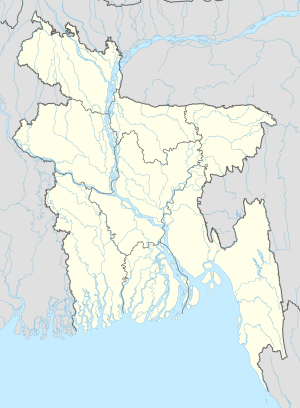
Srebrenica is a town and municipality located in the easternmost part of Republika Srpska, an entity of Bosnia and Herzegovina. It is a small mountain town, with its main industry being salt mining and a nearby spa. As of 2013, town has a population of 2,604 inhabitants, while the municipality has 13,409 inhabitants.

Al-Manshiyya, was a Palestinian village with a Muslim orphanage and a mosque known as the mosque of Abu 'Atiyya, which is still standing. The village was close to the shrine of Bahá'u'lláh, who was the founder of the Bahá'í Faith, which is also still standing.

Religious segregation is the separation of people according to their religion. The term has been applied to cases of religious-based segregation occurring as a social phenomenon, as well as to segregation arising from laws, whether explicit or implicit.

Caesarea, named in Hebrew: קֵיסָרְיָה, Keysariya or Qesarya, often simplified to Keisarya, and in Arabic: قيسارية, Qaysaria, is a town in north-central Israel, which inherits its name and much of its territory from the ancient city of Caesarea Maritima. Located midway between Tel Aviv and Haifa on the coastal plain near the city of Hadera, it falls under the jurisdiction of Hof HaCarmel Regional Council. With a population of 5,127, it is the only Israeli locality managed by a private organization, the Caesarea Development Corporation, and also one of the most populous localities not recognized as a local council.

Muslims constitute 5 percent of the population of Trinidad and Tobago, representing 102,421 individuals. The majority live in Trinidad but there are a handful in Tobago as well.

Qula was a Palestinian village in the Ramle Subdistrict of Mandatory Palestine. It was located 15 km northeast of Ramla and was depopulated during the 1948 Arab-Israeli War.

Islam in Vanuatu is a minority religion. Roughly 1,000 Muslims according to online estimates

Al-Muzayri'a was a Palestinian village in the Ramle Subdistrict. It was depopulated in 1948.

Nasir ad-Dīn was a small Palestinian Arab village 3 kilometers (1.9 mi) southwest of Tiberias, on the crest of a slope that overlooks the Sea of Galilee. The village had several springs to the east, south, and southeast. In the 1931 British census 179 people lived there, decreasing to 90 in a 1945 census. Nasir ad-Din and nearby al-Manara were in the same jurisdiction with 4,185 dunams of land, most of which was allocated to cereals.

Itagi is a village in the southern state of Karnataka, India. It is located in the Khanapur taluk of Belgaum district in Karnataka.

Kunnur is a village in the southern state of Karnataka, India. It is located in the Chikodi taluk of Belgaum district in Karnataka.

Kusugal is a village in the southern state of Karnataka, India. It is located in the Hubballi taluka of Dharwad district of Karnataka state.
The Kravica massacre was an attack on the Bosnian Serb village of Kravica by the Army of the Republic of Bosnia and Herzegovina (ARBiH) from the Srebrenica enclave on Orthodox Christmas Day, 7 January 1993. During the Bosnian War, the Srebrenica enclave was besieged by the Serb forces who rarely allowed humanitarian aid to enter the area, creating hunger and lack of medicine among the Srebrenica inhabitants. It is alleged that the ARBiH attacked, among other objectives, in order to find food, but also to acquire weapons, ammunition and military equipment. The attack was organized to coincide with the Serbian Orthodox Christmas, leaving the Serbs unprepared for any attack.

Al-Rihaniyya was a Palestinian Arab village in the Haifa Subdistrict. It was depopulated during the 1947–1948 Civil War in Mandatory Palestine on 30 April 1948 as part of the battle of Mishmar HaEmek. It was located 25 km southeast of Haifa and 3 km northwest of Wadi al-Mileh.

Nitaf was a small Palestinian Arab village in the Jerusalem Subdistrict. It was depopulated during the 1947–1948 Civil War in Mandatory Palestine on April 15, 1948 during the second stage of Operation Dani. Located 17 km west of Jerusalem, the village was built on an archaeological site which was surrounded by a number of khirbas.

Bayt Susin was a Palestinian Arab village in the Ramle Subdistrict of Mandatory Palestine, located 17 kilometers (11 mi) southeast of Ramla. In 1945, it had 210 inhabitants. The village was depopulated during the 1948 war by the Israeli 7th Brigade.

Dallata was a Palestinian Arab village, located on a hilltop 6 kilometers (3.7 mi) north of Safad. Constructed upon an ancient site, it was known to the Crusaders as Deleha. Dallata was included in the late 16th century Ottoman census and British censuses of the 20th century. Its inhabitants were primarily agriculturalists, with some involved in carpentry or trade.

Taytaba was a Palestinian-Arab village in the Safad Subdistrict, located 5 kilometers north of Safad. It was depopulated during the 1947–1948 Civil War in Mandatory Palestine in May 1948 under Operation Hiram. In 1945 it had a population of 530 and a total area of 8,453 dunams, 99.8% of which was Arab-owned.

Fardisya was a Palestinian Arab hamlet in the Tulkarm Subdistrict. It was depopulated during the 1947–48 Civil War in Mandatory Palestine on April 1, 1948, under Operation Coastal Clearing. It was 2.5 kilometres (1.6 mi) south of Tulkarm. Fardisya was mostly destroyed with the exception of a single deserted house.
The Maluku Islands sectarian conflict was a period of ethno-political conflict along religious lines, which spanned the Indonesian islands that compose the Maluku archipelago, with particularly serious disturbances in Ambon and Halmahera islands. The duration of the conflict is generally dated from the start of the Reformasi era in early 1999 to the signing of the Malino II Accord on 13 February 2002.













